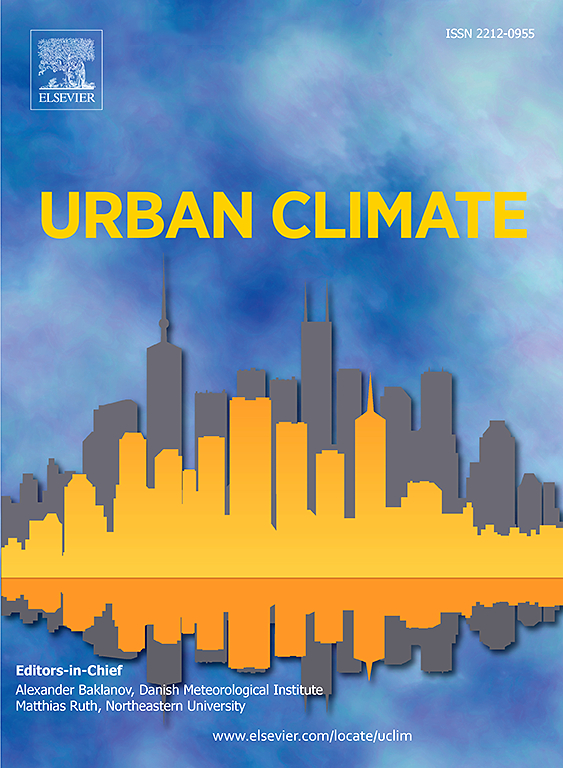Supply and demand analysis of urban thermal environments regulation services from an accessibility perspective: A coupled thermal risk and green space cooling assessment model
IF 6
2区 工程技术
Q1 ENVIRONMENTAL SCIENCES
引用次数: 0
Abstract
Urban Green Spaces (UGS) play a pivotal role in regulating the urban thermal environment, but the balance between the supply and demand for hot and cold spaces is often mismatched, leaving high-risk areas with inadequate cooling services. Oreover, due to population mobility and the complexity of spatial structures, the radiative effects between hot and cold spaces are often insufficiently considered. Therefore, this study proposed an accessibility-based framework for thermal environment assessment, which integrates thermal risks with the cooling benefits of green spaces, offering a comprehensive evaluation of urban heat conditions. Taking the central urban area of Fuzhou as a case study, the results demonstrate that Fuzhou's thermal environment risks are significant and worsening, with areas at level 4 and level 5 risk constituting 36.42 % of the city. The exposure to thermal risks has also increased, with high-exposure risk areas in 2023 rising by 4.67 % compared to 2008. In addition, the cooling service capacity has decreased, but overall cooling service accessibility is largely unaffected. In terms of the interaction between heat exposure and cooling accessibility, there is a significant spatial development inequality within the central city. This study provides a scientific basis for improving the urban thermal environment by identifying these problem areas and proposing appropriate spatial development strategies.
可达性视角下城市热环境调节服务供需分析——热风险与绿地降温耦合评价模型
城市绿地(UGS)在调节城市热环境方面发挥着关键作用,但冷热空间的供需平衡往往不匹配,导致高风险地区的制冷服务不足。此外,由于人口流动和空间结构的复杂性,冷热空间之间的辐射效应往往没有得到充分考虑。因此,本研究提出了一个基于可达性的热环境评价框架,将热风险与绿地的降温效益相结合,对城市热环境进行综合评价。以福州市中心城区为例,结果表明:福州市热环境风险显著且不断恶化,4级和5级风险区占全市面积的36.42%;热风险暴露也有所增加,与2008年相比,2023年的高暴露风险区域增加了4.67%。此外,制冷服务能力有所下降,但总体制冷服务可达性基本未受影响。在热暴露与降温可达性的相互作用方面,中心城区存在显著的空间发展不平等。本研究为城市热环境的改善提供了科学依据,并提出了相应的空间发展策略。
本文章由计算机程序翻译,如有差异,请以英文原文为准。
求助全文
约1分钟内获得全文
求助全文
来源期刊

Urban Climate
Social Sciences-Urban Studies
CiteScore
9.70
自引率
9.40%
发文量
286
期刊介绍:
Urban Climate serves the scientific and decision making communities with the publication of research on theory, science and applications relevant to understanding urban climatic conditions and change in relation to their geography and to demographic, socioeconomic, institutional, technological and environmental dynamics and global change. Targeted towards both disciplinary and interdisciplinary audiences, this journal publishes original research papers, comprehensive review articles, book reviews, and short communications on topics including, but not limited to, the following:
Urban meteorology and climate[...]
Urban environmental pollution[...]
Adaptation to global change[...]
Urban economic and social issues[...]
Research Approaches[...]
 求助内容:
求助内容: 应助结果提醒方式:
应助结果提醒方式:


